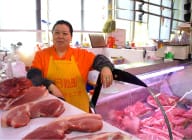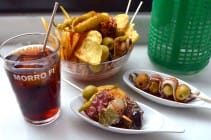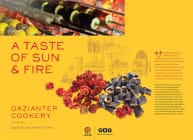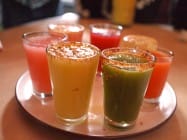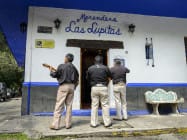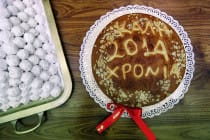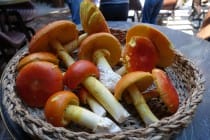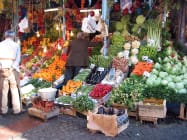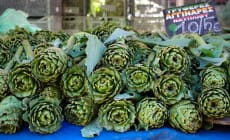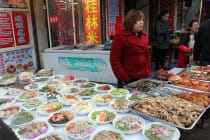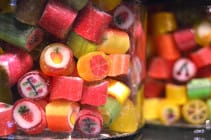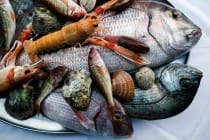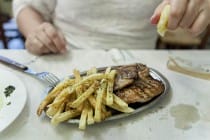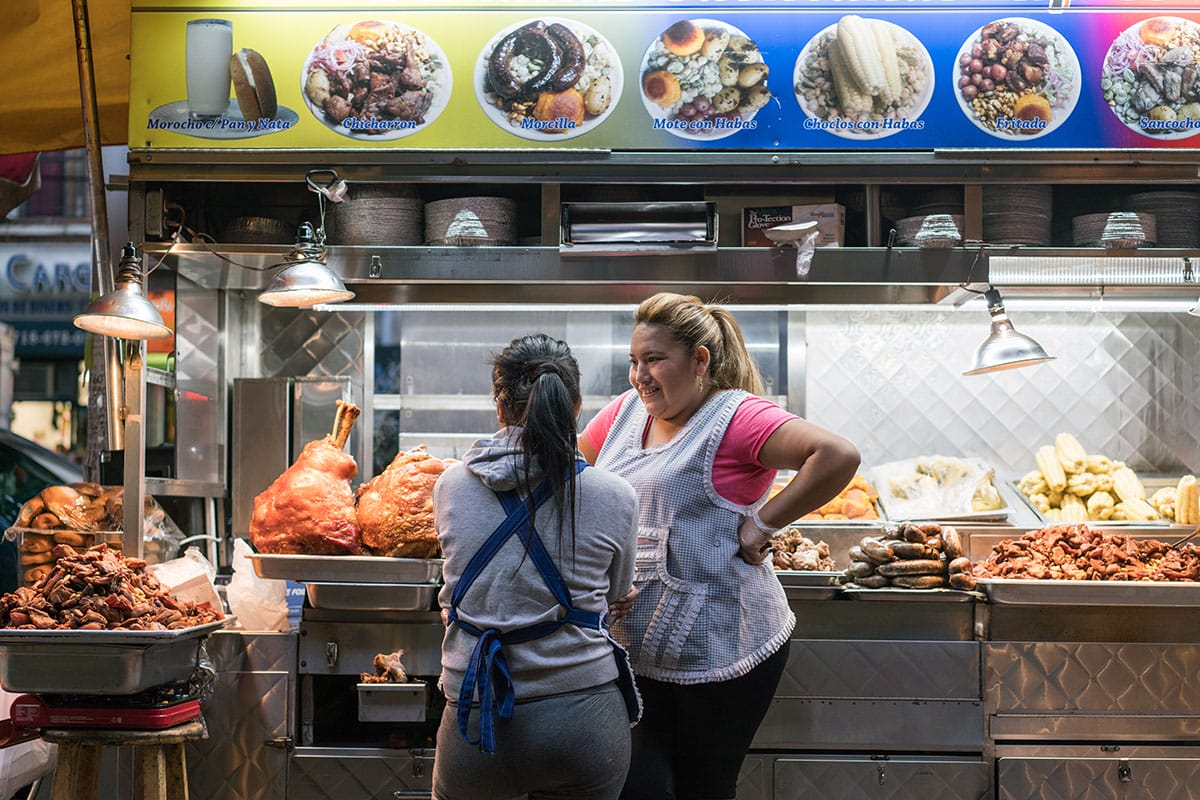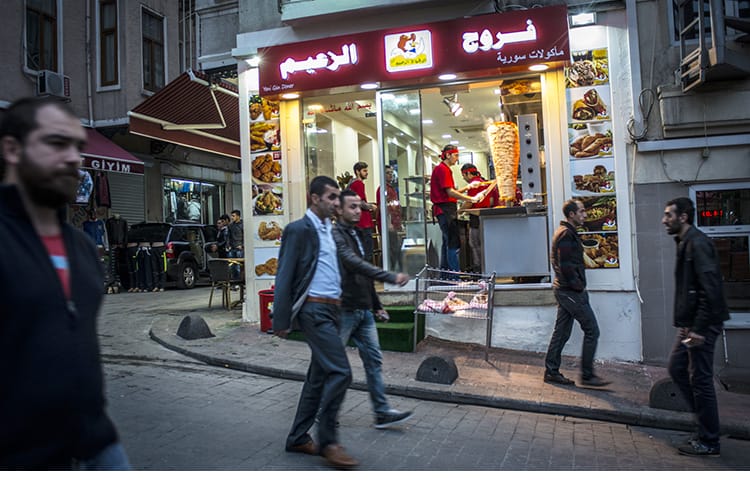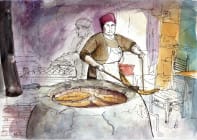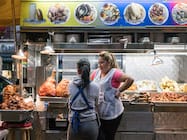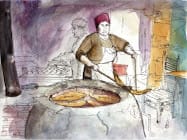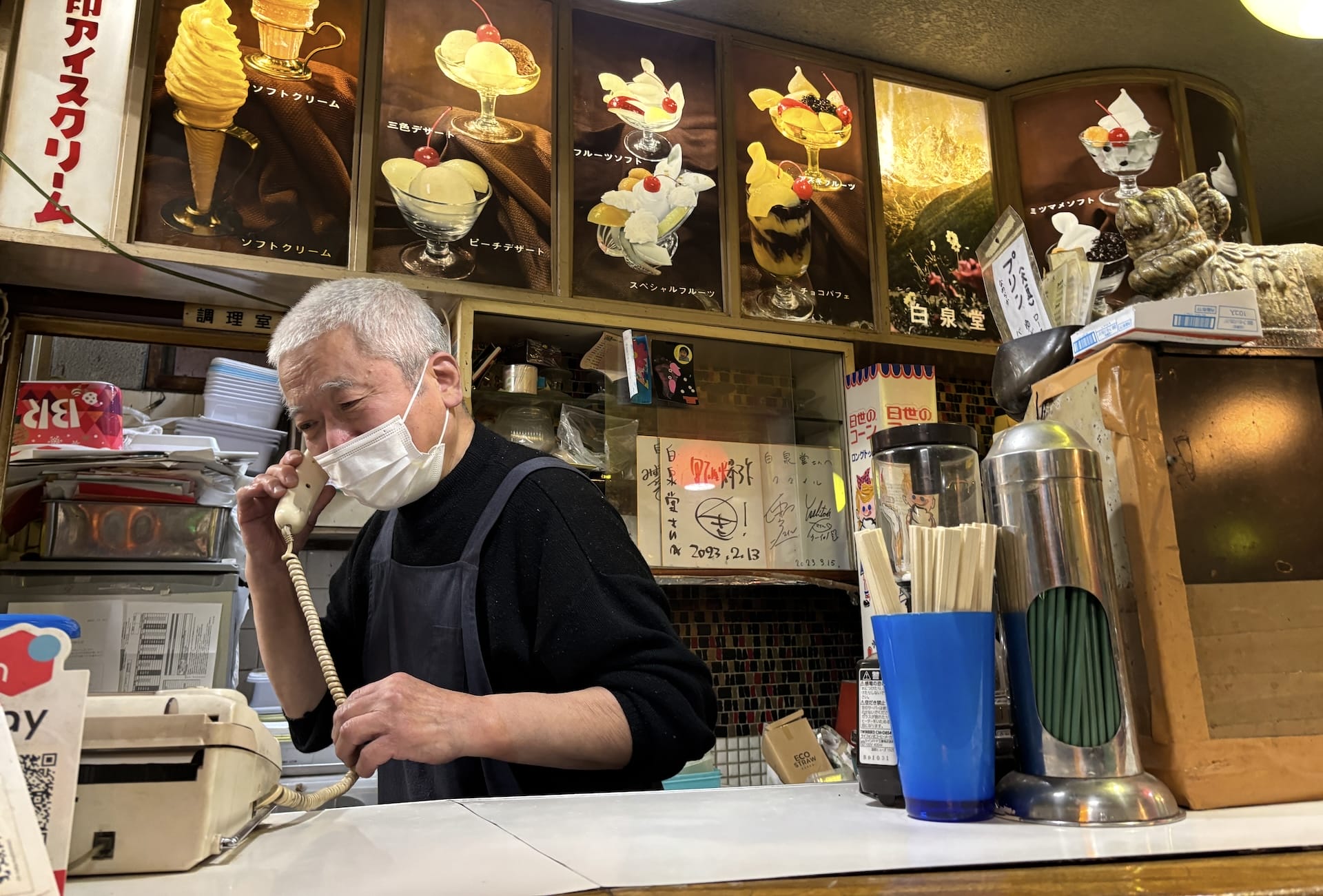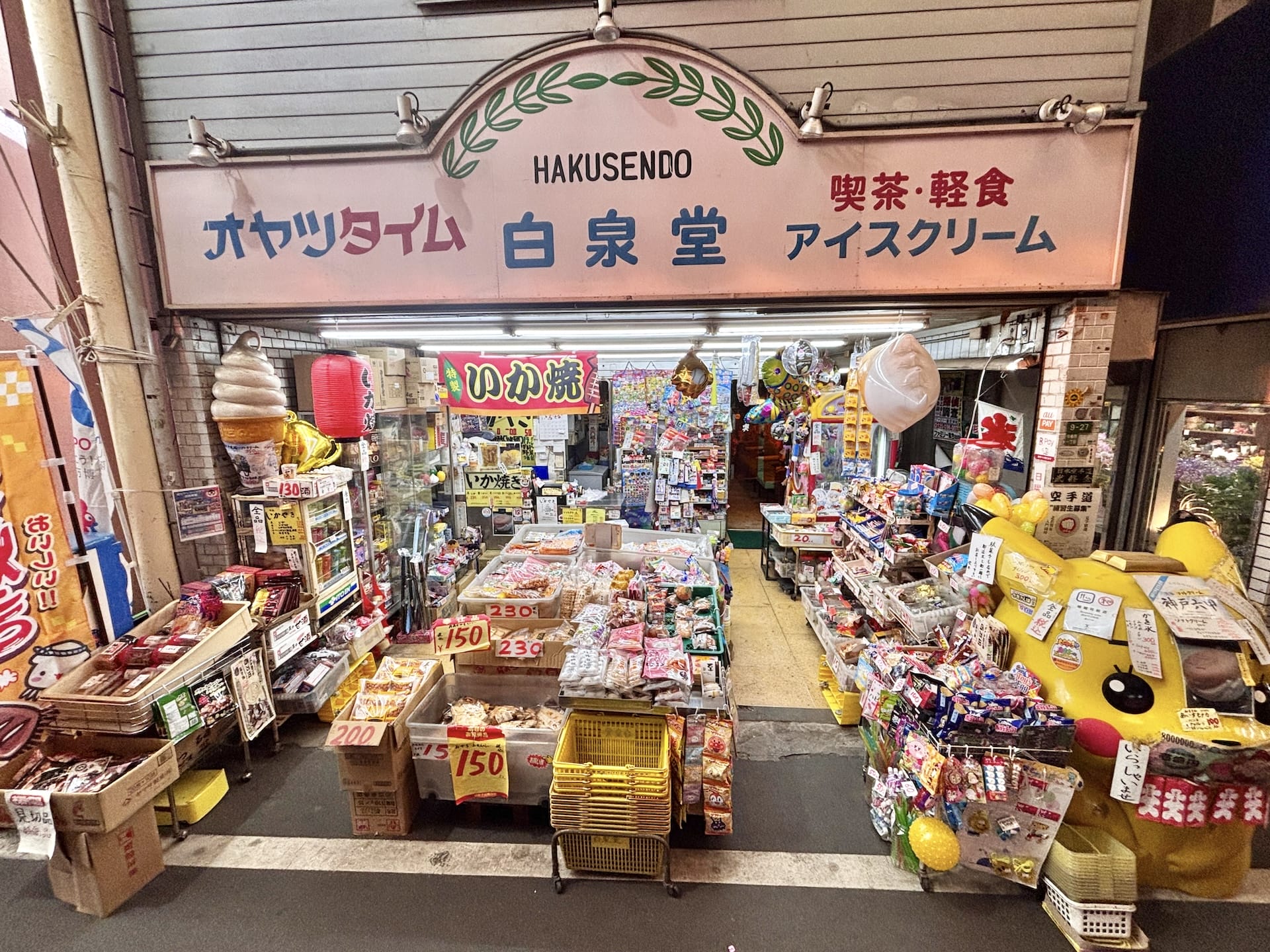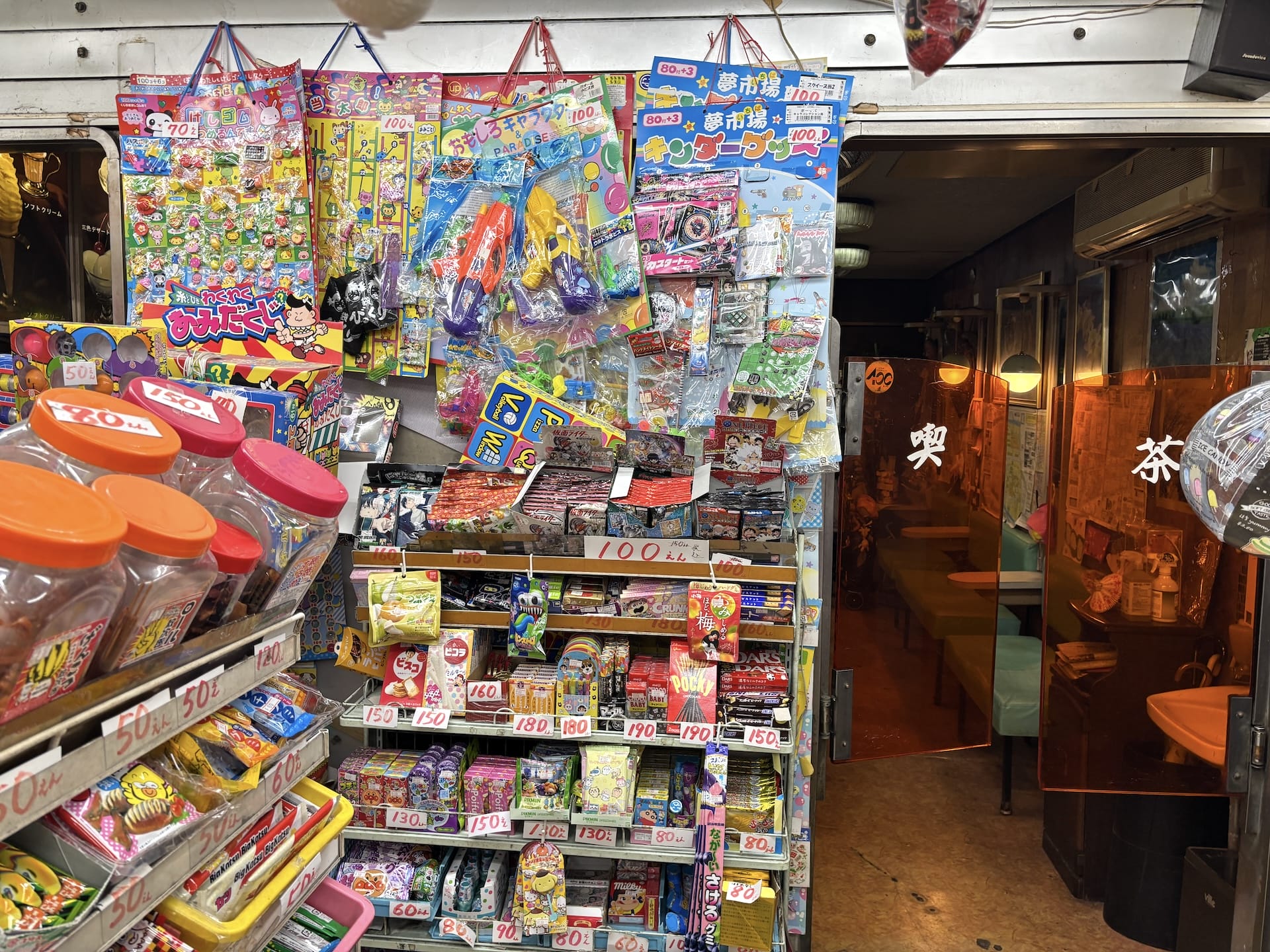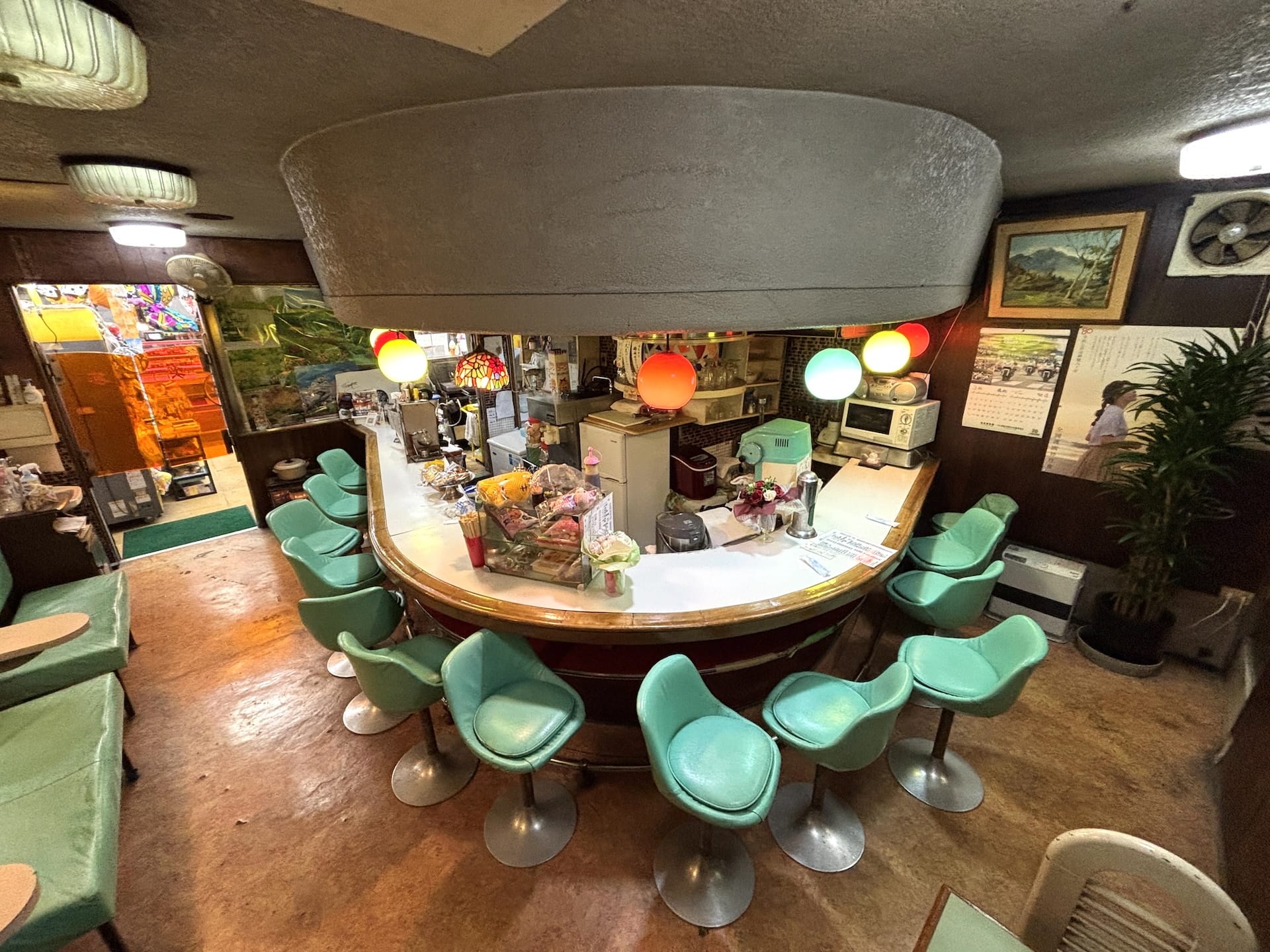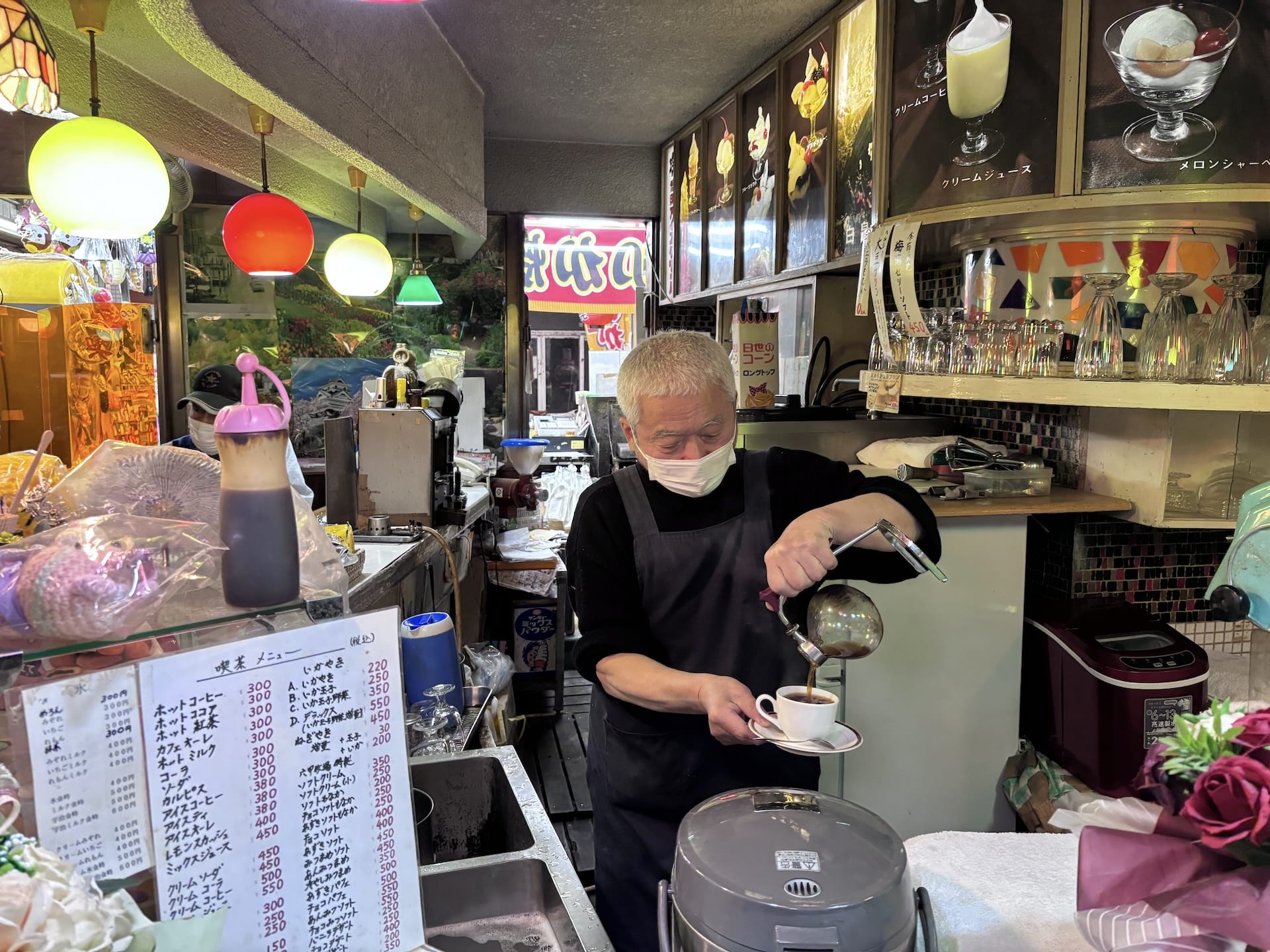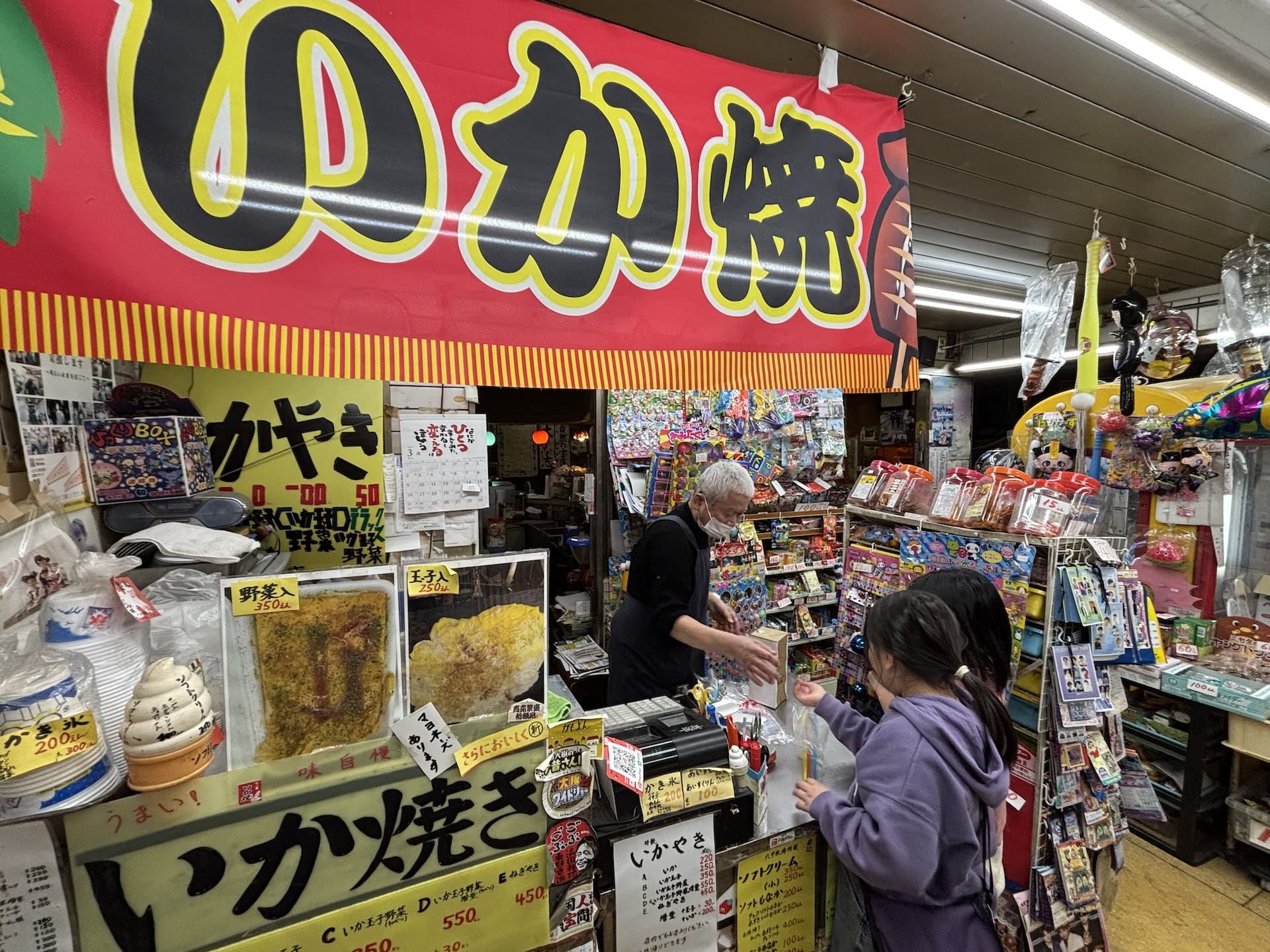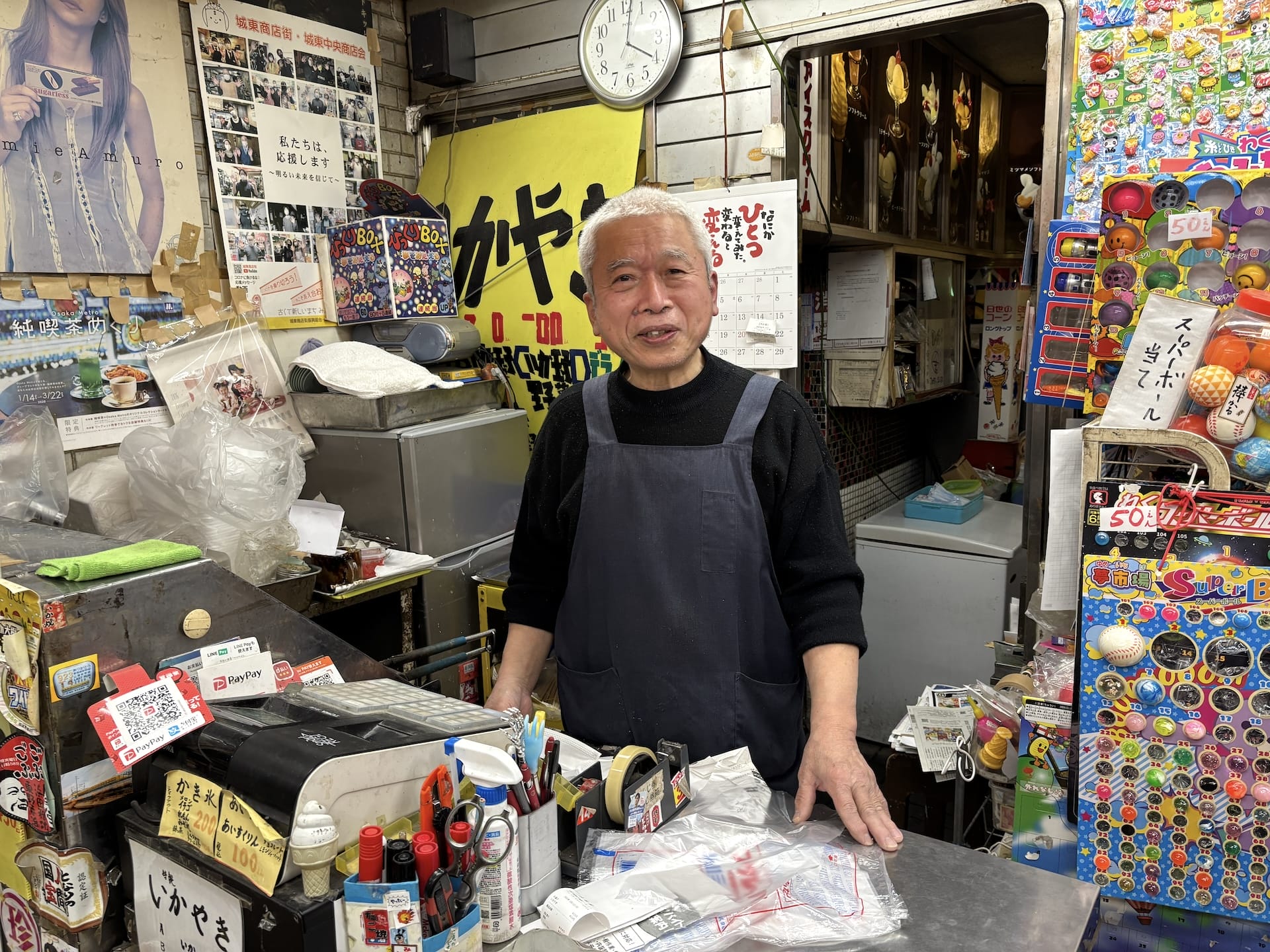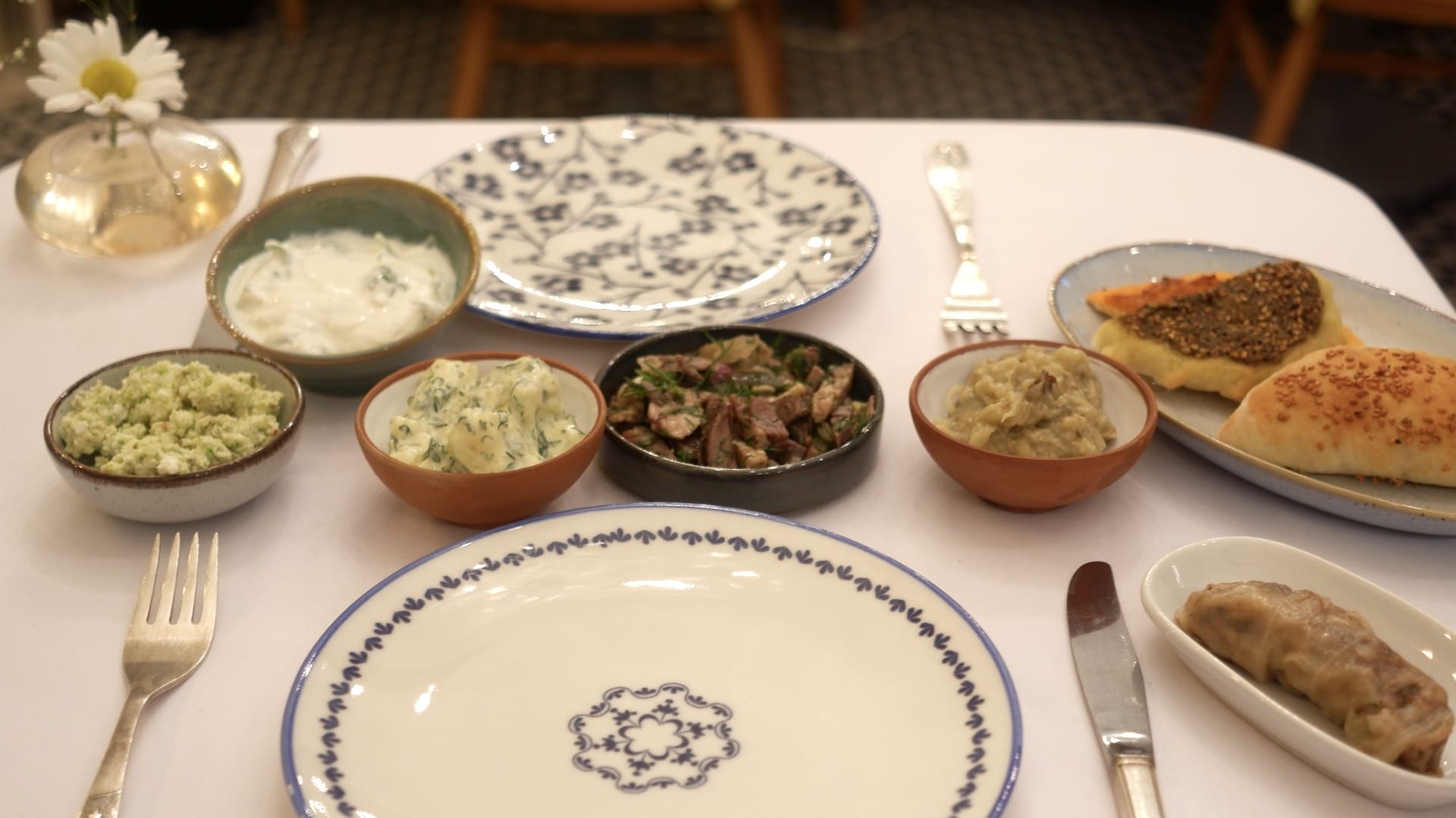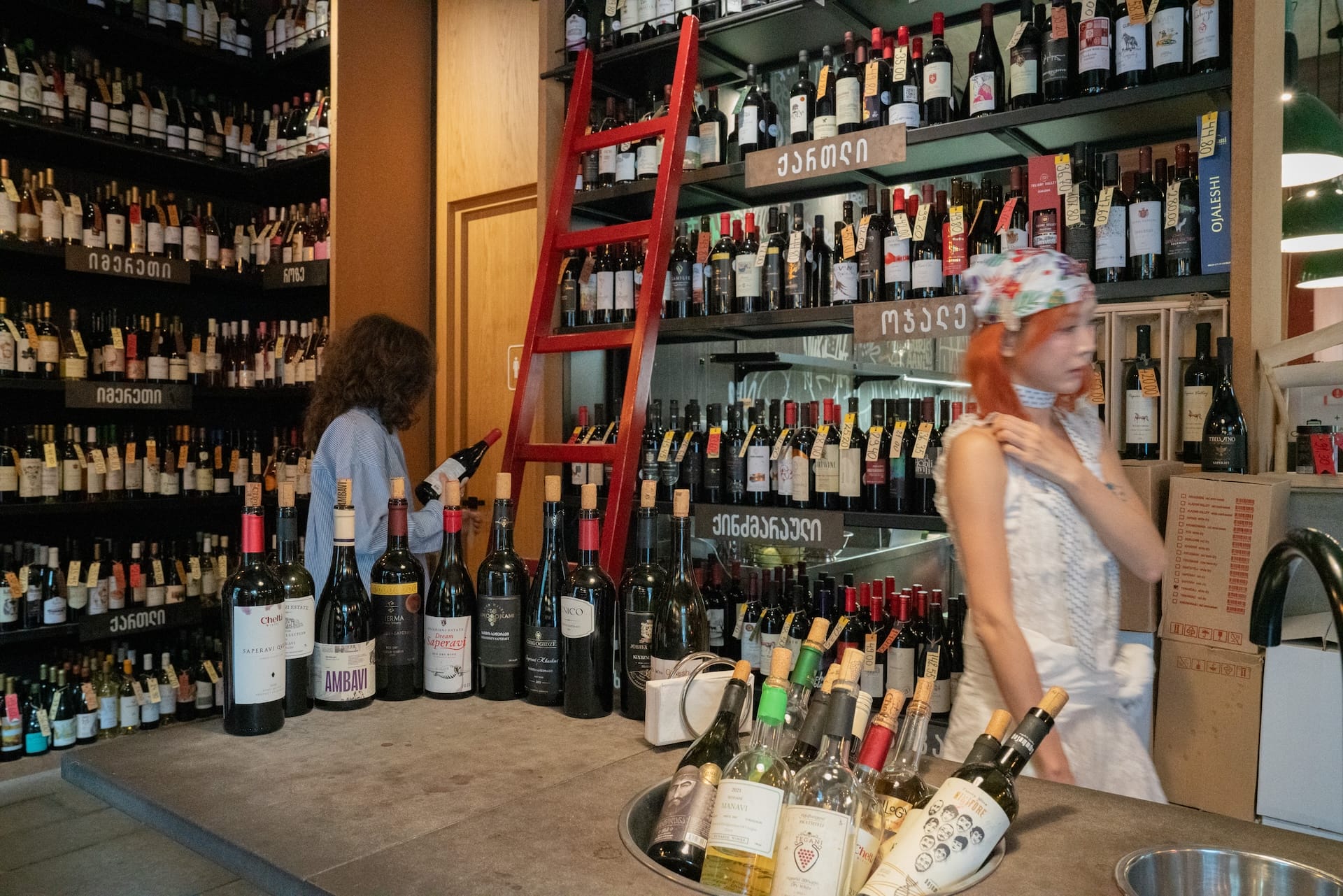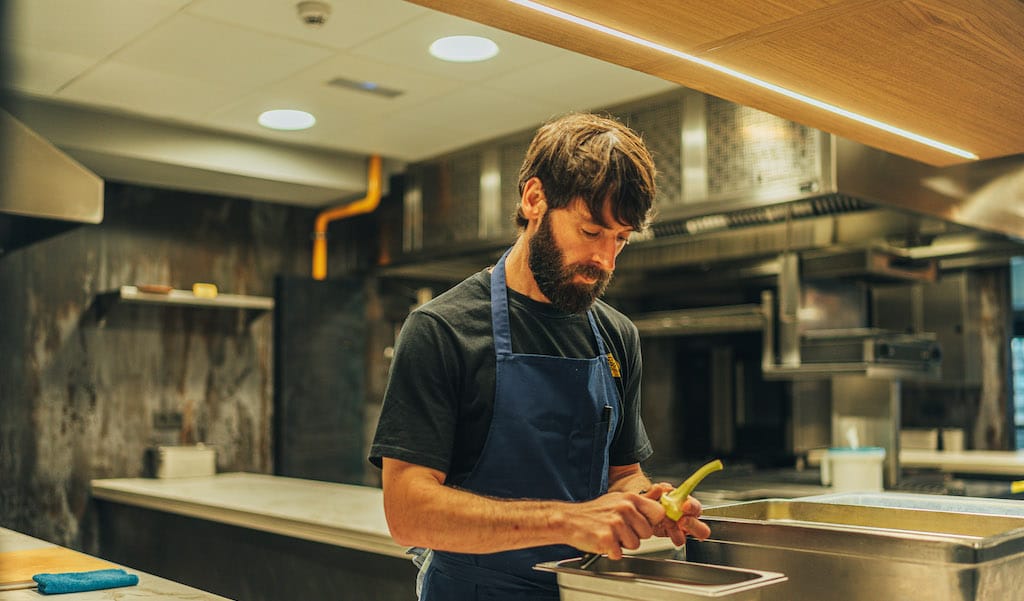Eastern Osaka’s Joto shotengai, or commercial district, is a sleepy shopping arcade frozen in a bygone era. Walking down its twisting alleyways of faded storefronts leads to a colorful candy shop whose stacks of sugary treats conceal a hidden cafe called Hakusendo. Built to look space-age futuristic in 1970 to coincide with the Osaka World Fair, this kissaten (a term for similar Western-influenced Japanese coffee and tea shop of the 20th century) is now considered a retro masterpiece. This one-of-a-kind treasure has caught the eye of Japanese TV programs, local newspapers and influencers alike – attracting visitors to what would otherwise be an off-the-radar location.
Owners Akihiro and Kiwami Takayanagi make everything by hand, including sizzling squid pancakes, fish-shaped ice cream sandwiches, and specialty coffee. Hakusendo’s desserts might have something to do with its cult following. Take the farm-fresh ice cream sourced from Kobe’s Rokko bokujo (pasture), which customers can enjoy in a coffee float, the brewed drink made in a siphon which looks like something from a mad scientist’s experiment. “It makes the drink less acidic and uses all of the bean,” Akihiro explained. “It’s a little strong, but delicious.” It’s the perfect complement to the also-delicious parfaits, which include house-made red bean paste, or anko.
This wasn’t always the case. This second-generation family business actually started as an ice cream delivery service. “As packaged frozen desserts became the norm our delivery business wasn’t working,” recalls Akihiro. “Our sign said ‘ice candy’ so we erased ‘ice’ and focused on candies instead.” Hakusendo pivoted to sell the cheap, brightly packaged Japanese candy called dagashi. Then came the cafe through the hidden doors. “I liked the idea of a membership club with a concealed door – a fun service for our regulars. Many people like to eat the dagashi inside as well!”
Hakusendo is just as fun now as it was back then. Being here is like hanging out in Japan fifty years ago. The circular counter that sweeps around the kitchen makes conversation inevitable – with the friendly owners as well as those munching beside you. The straw holders scattered intermittently across the counter look like something out of an American malt shop. “Hakusendo hasn’t changed a bit!” marveled one customer, who says she’s been coming here since it opened. “It’s like entering a time warp!” For 300 yen for a cup of coffee (about US$2), even the prices seem to have stayed the same.
Inside, there’s a spot to park a stroller, too – this is a rare child-friendly kissa. “Kids always stop here on the way home from school,” the owner explains, “They drag their parents here, whether they like it or not.” These young customers are drawn to the cheap dagashi, which are usually 10 yen or less a piece. They love to collect the different types – some varieties have been around for over half a century, packaging and recipe unchanged. The sweets available have been hand-selected over the years – some of the wilder options include Ultraman chocolates for fans of the Japanese superhero, and Nagasaki ginger jelly-filled biscuits. Rummaging around the shop to find them is half the fun.
Whether these sweets go well with a squid pancake, another menu item, is anybody’s guess. To make it, Akihiro uses his gigantic teppan press, located in the candy shop next to the scavenging schoolgirls. He tosses the ingredients one by one on the hot surface and uses the press to flatten them together, preparing his rendition of this famous Osaka dish.
After taking a steaming bite we asked how he got the drool-inducing, chewy mochi-like consistency. “Do you use just wheat flour or add something else?” Akihiro paused for a moment and smiled pridefully, “That’s a trade secret. But it’s my original recipe, and I add lots of things to make it delicious.” He’s as enigmatic as his cafe’s hidden door – and we finish our meal even more intrigued than when we arrived.
Published on July 09, 2025
















